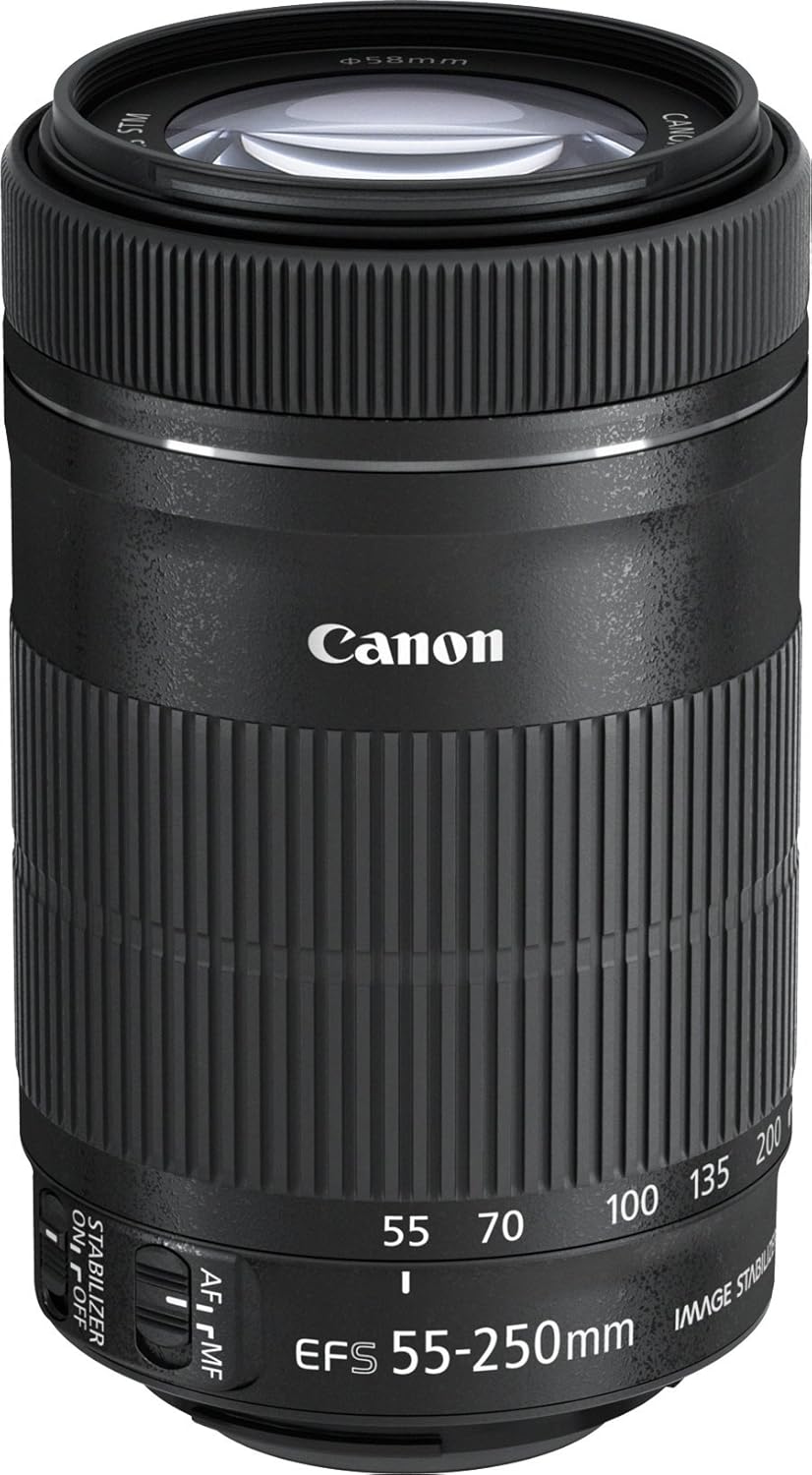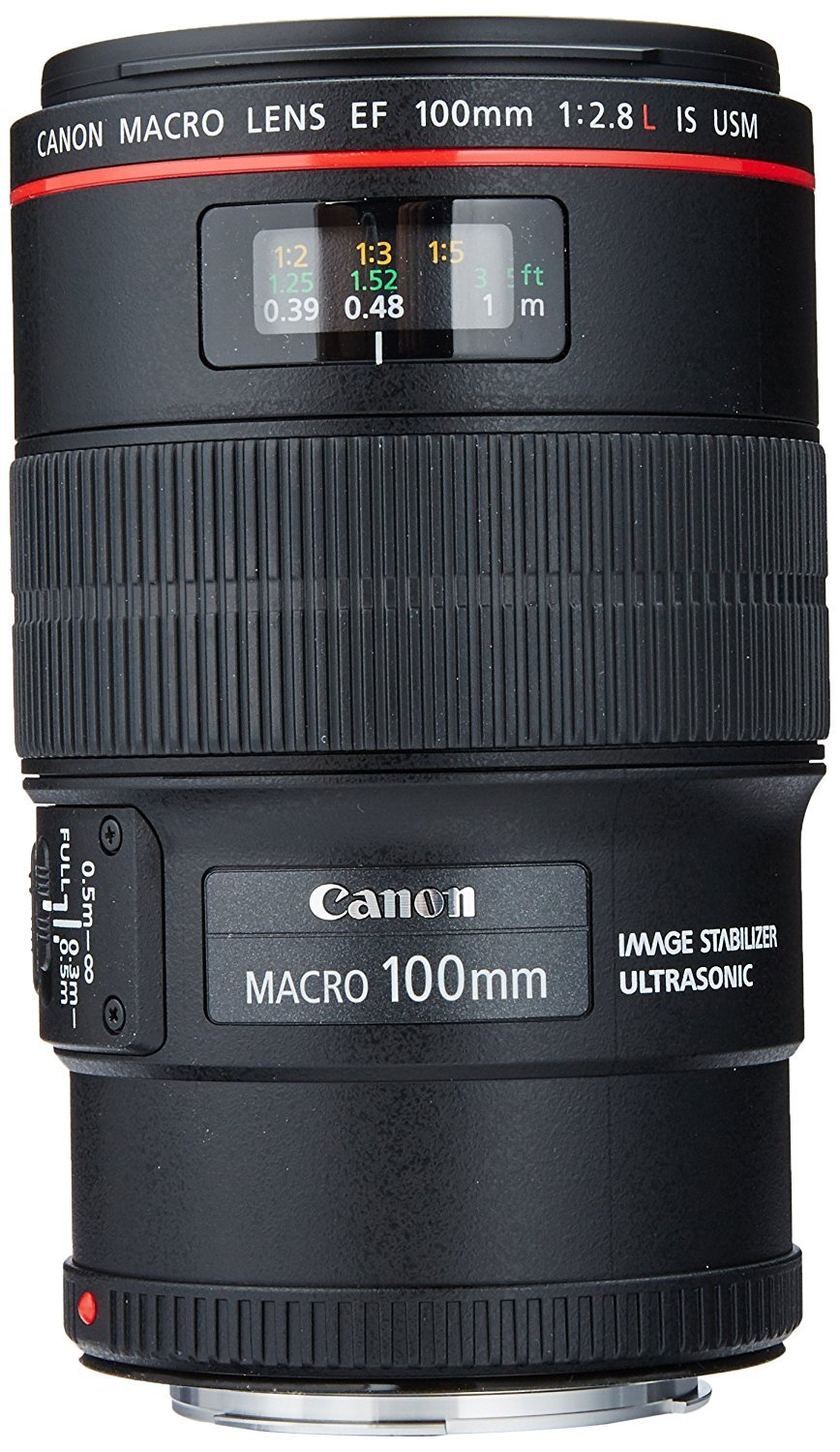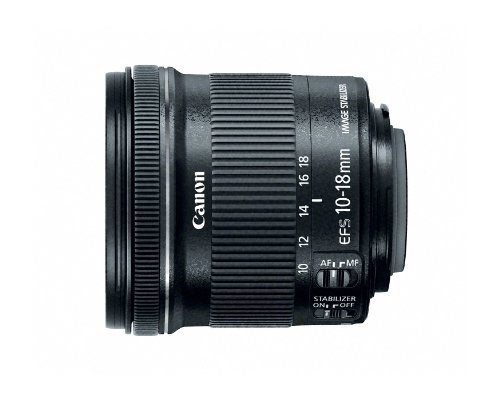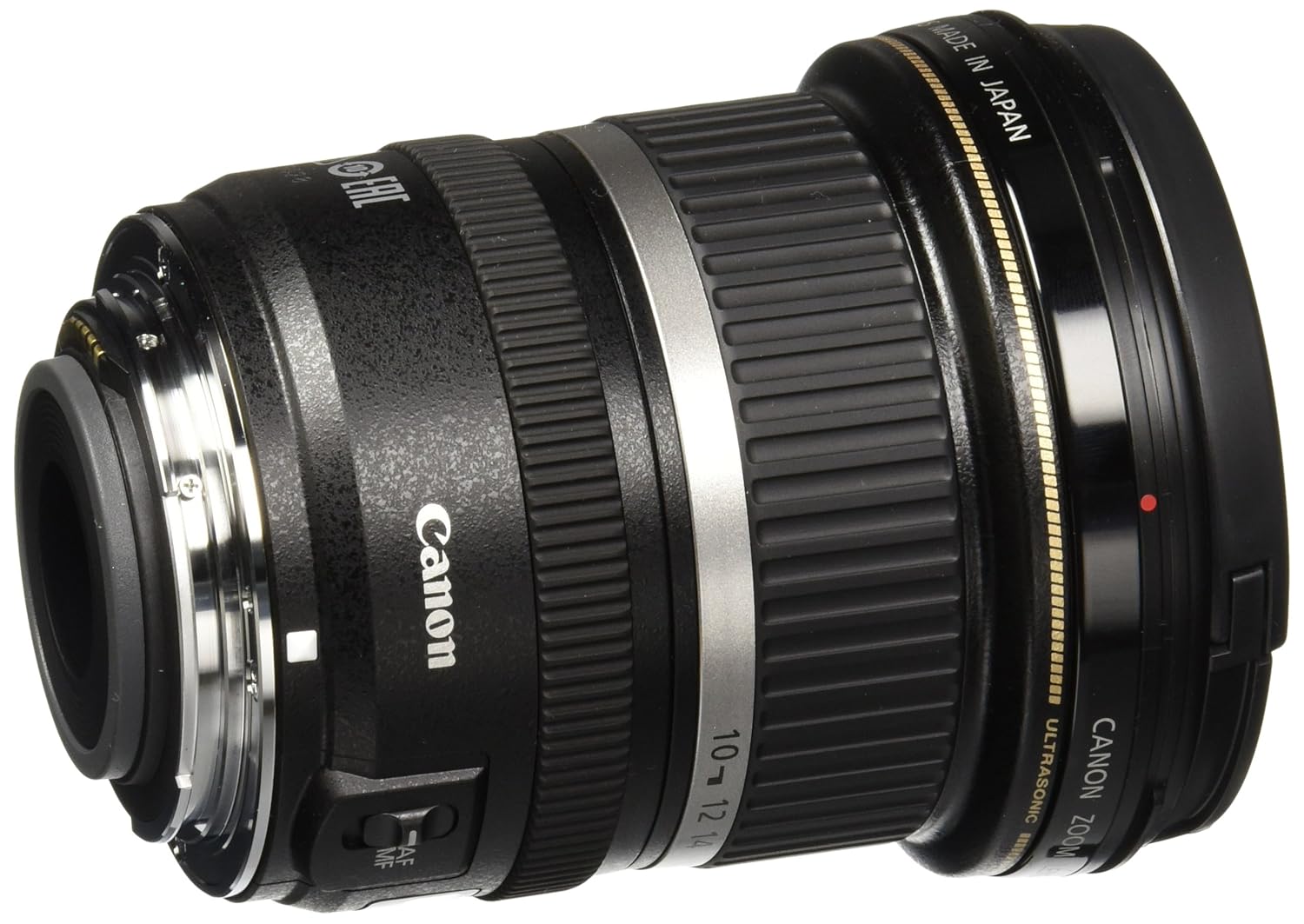The Canon 80D is a truly versatile, enthusiast-level DSLR. With the most modern of customizable controls, top panel LCD, maximum 7 fps continuous shooting and 27 f/8 compatible AF points, this 24.2 megapixel camera surely is positioned in the higher class. Also, it has an Intelligent Viewfinder that works with the LCD for ease of shot composition. Additionally, WiFi with NFC connection brings the above capabilities full circle. But to to capitalize on its performance, one must use to proper lens. We will help you with that process below.
Side note, if you’re looking for some awesome accessories to go along with your Canon 80D lenses check out our article on the Top 10 Must Have Canon 80D Accessories in 2019.
Travel & Casual Photography
Certain lenses of the Canon 80D allow for ease of use alongside its modern function. The standard lenses that we have chosen for this category range from 17-200mm

Canon 17-55mm f/2.8 IS USM
Rating
|
Pros |
CONS |
|---|---|
|
|
Specifications
The Canon 17-55mm f/2.8 is equipped with certain features that give it great optical performance including a 3 stop image stabilizer, circular aperture, the brand’s Super Spectra coating and optimized flash metering. The Super Spectra coating aids color balance and contrast and dramatically reduces flare and ghosting. Also it is worth noting that the optimal flash metering is achieved by the passing of distance information to the camera’s E-TTL II flash system. This function is a hallmark on Canon camera’s in the sense that it masterfully avoids over or under exposure by collecting such information from lenses as well as from ambient light and reflective objects in order to assess specific flash output. The lens construction is 19 glass elements in 12 groups.
Review
This lens is a high performance wide angle zoom that can serve a variety of functions. The above qualities make it the best of the EF-S class of lenses. In addition to all-around use it is also great for portrait and landscape shots.

Canon 15-85mm f/3.5-5.6 IS USM
Rating
|
Pros |
CONS |
|---|---|
|
|
Specifications
This lens features 17 glass elements in 12 groups. It has a minimum focusing distance of 0.35m and a maximum magnification ratio of 0.21x. Its image stabilizer features 4 stops and adds great facility to the lens. It contains additional Canon standard functions such as an Ultrasonic motor, Super Spectra coating and 7 blade circular aperture for great background blur.
Review
The Canon 15-85mm f/3.5-5.6 is a great modest quality all-in-one lens for the exploratory amateur photographer. Due to the image stabilizer, this lens is particularly good in low light conditions also.

Canon 18-135mm f/3.5-5.6 IS USM
Rating
|
Pros |
CONS |
|---|---|
|
|
Specifications
The Canon 18-135mm f/3.5-5.6 is a multi-function zoom lens with great range featuring a couple features that set it apart from other models. It is a compact lightweight lens with a relatively close minimum focusing distance of 0.25m. It’s 6 blade aperture gives off modest quality bokeh. Also it features a high speed CPU alongside a DC autofocus motor for high resolution AF performance. It additionally contains a 4 stop image stabilizer and Super Spectra coating. This lens contains 16 glass elements in 12 groups.
Review
This is truly a great lens for a variety of functions including casual use, as well as more specialized telephoto and wideangle purposes. This is a great value for a photographer willing to sacrifice amenity such as top notch bokeh and more advanced telephoto/wideangle features for variety of use and great range at a good price.

Canon 24mm f/2.8 STM
Rating
|
Pros |
CONS |
|---|---|
|
|
Specifications
This particularly thin or “pancake” lens is super compact and lightweight-weighing an astonishing 125g. It is a great fit at the natural human eye perspective with a vertical angle of view of 50 degrees. Additionally, its close focusing distance is a remarkable 0.16m. This lens features 6 glass elements in 5 groups and contains a 7 diaphragm blade circular aperture.
Review
The Canon 24mm f/2.8 is without a doubt the most comfortable and handy all-in-one lens. It, therefore, makes for the perfect travel companion for hassle free shooting. Add that to its super close focusing distance and great maximum aperture and this lens is very likely one of the best options on this list for most photographers. Additionally, this lens also makes for tremendous portrait shots due to its sharpness and great bokeh.

Canon 18-200mm f/3.5-5.6 IS
Rating
|
Pros |
CONS |
|---|---|
|
|
Specifications
The Canon 18-200mm f/3.5-5.6 definitely has a few specialist functions to accompany its all-in-one features. It has a close focusing distance of 0.45m and maximum magnification of 0.24x. The lens construction is 16 glass elements in 12 groups. Amongst these are 2 aspheric lens elements and 2 ultra dispersion lens elements to fight chromatic aberration and ensure consistent quality to the camera corners.
Review
This powerful zoom lens of 11x is great for a photographer seeking a well rounded all-in-one lens with a bit extra. This is a great for a beginner to amateur looking to explore their niche among a variety of range.
Sports & Action
There are several great fits to the Canon 80D for action shots. It is important to choose such with high performing vibration reduction and automatic focus. The below have those qualities, plus a bit more:

Canon 55-250mm f/4-5.6 IS STM
Rating
|
Pros |
CONS |
|---|---|
|
|
Specifications
The Canon 55-250mm f/4-5.6 is a compact, complex telephoto lens. It contains 15 glass elements in 12 groups. It has a closest focusing distance of 0.85m and a max magnification ratio of 0.29. It’s 7 blade rounded aperture gives off quality bokeh. Also, it is a tremendously lightweight telephoto lens, weighing only 375g.
Review
This supremely lightweight and handy telephoto is perfect for the photographer set to a great deal of maneuvering in capturing the most intense action shots. This is an arduous process over time with most of the similarly specified telephoto range. For a passionate photographer looking to explore there niche and consider a diverse range of use, we highly recommend this option as one could get lost in the art without much discomfort.

Canon 70-300mm f/4-5.6 IS USM
Rating
|
Pros |
CONS |
|---|---|
|
|
Specifications
The Canon 70-300mm sets the standard for its class of telephoto lenses as it leads in several of its specifications. More importantly, it contains an outstanding 9 bladed aperture for quintessential and professional sensationalism to accompany its action. It is relatively compact for a telephoto lens at it is only 14.55cm in length-when retracted-and 710g in weight. It’s image stabilizer allows for the use of a shutter speed 4 stops slower than otherwise for ideal sharpness. As far as lens construction, it has 17 glass elements in 12 groups-featuring an ultra low dispersion lens element to ensure great contrast and high image resolution. Further, its Nano USM feature greatly enhances the autofocus capability in shots as well as transitions during moviemaking.
Review
For the professional or aspirant photog, this lens is a fantastic option. It’s maximum aperture could be a bit higher, but there is a certain facility to Canon photography that we would argue makes up for it. The autofocus is very well the most efficient in the market-providing an edge for settings and scenes that most need it. That, with the added bonus of its compactness for a lens of its type, truly defines excellence in its class of telephoto lens. It’s 9 blade aperture, versus the typical 7 blade for most other Canon lenses, is a phenomenal icing on the cake for this amazing specimen.
Small Objects & Minute Detail
Macro shots are those intended to convey minute detail. These include those for scientific and artistic purposes as well as close up shots of nature and insects. These lenses magnify smaller objects to real life size. Check out:

Canon 50mm f/2.5 EF Macro
Rating
|
Pros |
CONS |
|---|---|
|
|
Specifications
The Canon 50mm f/2.5 is a versatile lens suiting macro photography at all levels with a large aperture of f/2.5. It features 9 glass elements in 8 groups. It has a maximum magnification of 0.50x and a minimum focusing distance of 0.23’. Additionally, its lightweight construction is considerable at 280g. One unique facet of this lens is its Electromagnetic diaphragm (EMD) that allows for amazingly precise aperture control. Further, the Super Spectra coating reduces flare and ghosting, while maintains high contrast and adequate color balance.
Review
Primarily, with its near natural angle of view at 46 degrees, this lens is a great and intuitive fit for all photographers-beginner and professional, alike. It has a reputation for excellent sharpness and contrast and it is also notable in its ease of use. It is great for macro shots in nature, as well as cool captures of portraits and food-but most essentially the latter two due to the limits of its range.

Canon EF 100mm f/2.8L Macro IS USM
Rating
|
Pros |
CONS |
|---|---|
|
|
Specifications
This lens provides similar features as the 50mm but at a greater range. The USM motor allows it to excel at this function with a particularly fast and quiet autofocus. It contains 15 glass elements in 12 groups, with an ultra low dispersion element that prevents chromatic aberration. It has a maximum magnification of 1 and a minimum focusing distance of 0.3m. Additionally, Canon has a super unique macro feature known as Hybrid IS that is integrated in this lens. This is a tripod feature that dramatically helps counteract angular and shift camera shake-a phenomenon that is much more prevalent in macro photography.
Review
The Canon EF 100mm f/2.8L Macro is the prototypical macro lens, unrestricted by its range. This lens is more suited to most macro photography in nature than the 50mm. The 100mm distance and its shallow depth of field is the perfect fit to portraiture, equally to macro photography.
Portraits
The generally low light shots of portraits and special events are a great fit with a few of the Canon 80D lenses. Be sure to check out:

Canon EF 50mm f/1.8 STM
Rating
|
Pros |
CONS |
|---|---|
|
|
Specifications
The Canon EF 50mm f/1.8 has the lens construction of 6 glass elements in 5 groups. It is a super lightweight option at only 160g. It’s maximum magnification is 0.21x and it has a minimum focusing distance of 0.35m. It’s facility of use is greatly steered by the STM (Stepping Motor) function that provisions for continuous and quiet shooting for both photos and videos.
Review
This artistic portrait lens also excels amongst other everyday uses, particularly in low light settings. These settings can fit fit the bill of fireworks, interior settings and even compelling nightscapes.
Landscape & the Built Environment
The built environment consists of municipal shots, architecture and interior design. The Canon 80D has some pretty impressive wideangle options:

Canon 10-18mm f/4-5.6 IS STM
Rating
|
Pros |
CONS |
|---|---|
|
|
Specifications
The Canon 10-18mm f/4-5.6 is equipped with Sony standards of Image Stabilizer, Super Spectra coating and STM (Stepping Motor) technology. It’s lens is made of 14 glass elements in 11 groups. The minimum focusing distance is 0.22m and the maximum magnification ratio is 0.15x.
Review
This lens is great for landscape, city views and skies and is even fitting for capturing wide city views and sky dynamics. Wideangle lenses are great for certain types of video and this can be accomplished without the noise of a focusing motor due to STM.

Sigma 10-20mm f/3.5
Rating
|
Pros |
CONS |
|---|---|
|
|
Specifications
The Sigma 10-20mm f/3.5 competes with the Canon 10-18mm but there are a few key features that give it its niche. Most notably, it has a larger maximum aperture than the Canon. This lens also has wide angle view of up to 102 degrees. Alongside its internal focusing technology, it contains an HSM (High Speed Motor) that offers an efficient autofocus of speedy and quiet function. The lens is constructed of 14 glass elements in 10 groups, with 3 super low dispersion elements and 3 aspherical elements.
Review
The Sigma lens may arguably lack in certain categories from a technical level but the surely have an edge that make them the most appealing to certain users. This lens was actually voted the Best Consumer Lens in Europe in 2006. Between its sharpness, compactness and budget price, this is truly a hallmark Lens for shooting landscapes, architecture as well as a range of cool travel shots.

Canon 10-22mm f/3.5-4.5
Rating
|
Pros |
CONS |
|---|---|
|
|
Specifications
The Canon 10-22mm f/3.5-4.5 is a lightweight and compact super wideangle zoom lens. It has features such as USM for fast autofocus and mechanics for captures with dramatic expression. The lens construction is 13 glass elements in 10 groups. Also it contains a maximum magnification of 0.17x and a minimum focusing distance of 0.24m 6 diaphragm blades
Review
This lens is a perfect attachment to an EFS camera such as the Canon 80D. This is an extremely sharp lens with much less distortion than most wide angle options. It is known to have a bit of distortion in the lower focal range, closer to 10mm, however in normal use this is a non-factor and it represents great value all-around.

